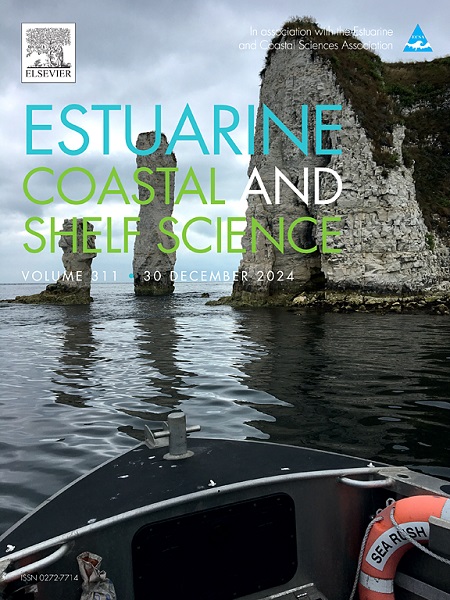Tracking long-term benthic recovery at a disused marine aggregate extraction site using monitoring tools developed for the marine aggregate industry
IF 2.6
3区 地球科学
Q1 MARINE & FRESHWATER BIOLOGY
引用次数: 0
Abstract
Structural recovery of sediment habitats is predicted following removal of pressures from marine aggregate extraction, but long-term investigations are lacking. We demonstrate recovery of an extraction site to comparable control conditions for sediments (after 11 years) and macrofaunal assemblage (after 15 years) using the Mahalanobis-test and Faunal Cluster ID shiny R applications (available via https://rconnect.cefas.co.uk/onebenthic_portal/).
Similar levels of annelid diversity were observed between impacted and control sites eight years post-dredging while bryozoan diversity at the impacted site did not reach control conditions.
The observed changes in macrofaunal structure and cluster group allocation are likely in response to resumed dredging activity nearby.
The present study informs our understanding of benthic recovery following intensive aggregate extraction and validates current monitoring tools. Further confidence in these and the underlying approach will be provided through collection of seabed recovery data from additional sites, representing the full range of environmental conditions and dredging practices.
使用为海洋骨料工业开发的监测工具,跟踪废弃海洋骨料提取地点的长期底栖生物恢复情况
预计在去除海洋集料开采压力后沉积物栖息地的结构恢复,但缺乏长期调查。我们展示了提取地点的沉积物(11年后)和大型动物组合(15年后)恢复到可比的控制条件,使用马氏线虫测试和动物群ID shiny R应用程序(可通过https://rconnect.cefas.co.uk/onebenthic_portal/).Similar获得),在疏浚后8年,在受影响地点和控制地点之间观察到环节动物多样性水平,而受影响地点的苔藓虫多样性未达到控制条件。观察到的大型动物结构和群群分配的变化可能是对附近恢复疏浚活动的响应。本研究告知了我们对密集集合体提取后底栖生物恢复的理解,并验证了当前的监测工具。将通过从其他地点收集海底恢复数据,以提供对这些和基本方法的进一步信心,这些数据代表了各种环境条件和疏浚做法。
本文章由计算机程序翻译,如有差异,请以英文原文为准。
求助全文
约1分钟内获得全文
求助全文
来源期刊
CiteScore
5.60
自引率
7.10%
发文量
374
审稿时长
9 months
期刊介绍:
Estuarine, Coastal and Shelf Science is an international multidisciplinary journal devoted to the analysis of saline water phenomena ranging from the outer edge of the continental shelf to the upper limits of the tidal zone. The journal provides a unique forum, unifying the multidisciplinary approaches to the study of the oceanography of estuaries, coastal zones, and continental shelf seas. It features original research papers, review papers and short communications treating such disciplines as zoology, botany, geology, sedimentology, physical oceanography.

 求助内容:
求助内容: 应助结果提醒方式:
应助结果提醒方式:


